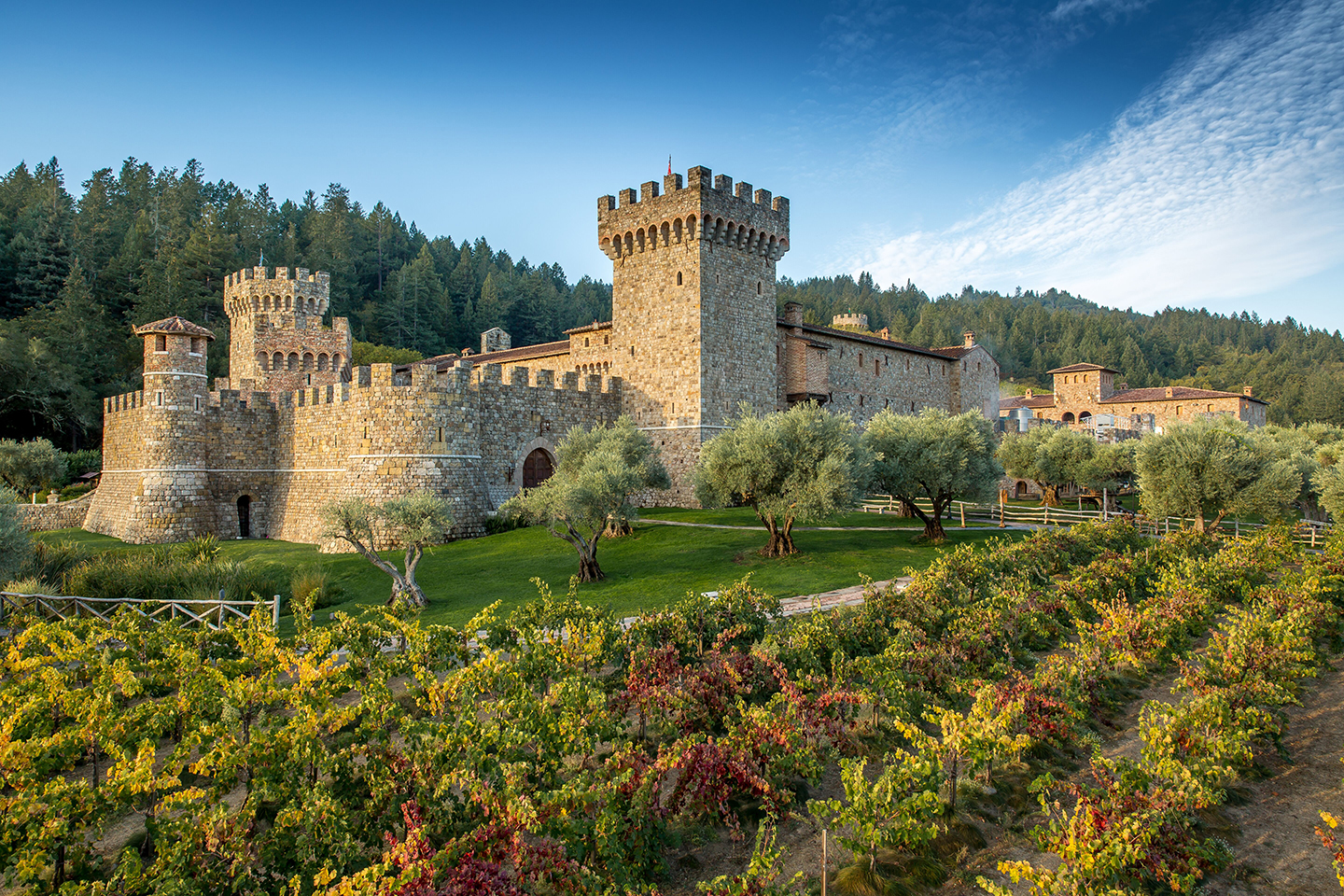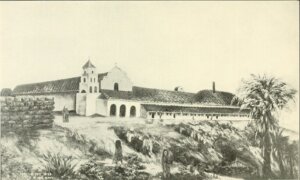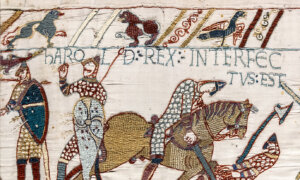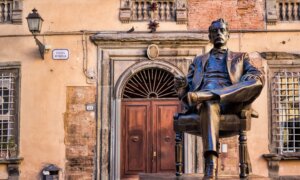Perched on a hill overlooking vast fields in Calistoga, California, is an enchanting medieval-style castle: Castello di Amorosa. Authentically designed to mirror centuries-old castles in Europe, the vast 121,000-square-foot structure’s construction began 30 years ago.
The goal of Castello di Amorosa owner Dario Sattui was to achieve as close to the look of a 14th-century castle as possible. He said: “I used only old, handmade materials. and I built it employing the same methods and materials that would have been used 700 to 800 years ago.”
Comprising three acres, the sprawling 107-room castle has four underground and four above-ground levels. It features many of the same characteristics of a historic castle, including a moat, drawbridge, towers, a chapel, and loggias. Plus, the ceilings, walls, and windows in many of the rooms are bedecked with exceptionally artistic design elements such as frescos, arches, stenciling, and more.
Situated on 171 acres in California’s Napa Valley wine country, Castello di Amorosa opened to the public in 2007 as a winery and event venue.
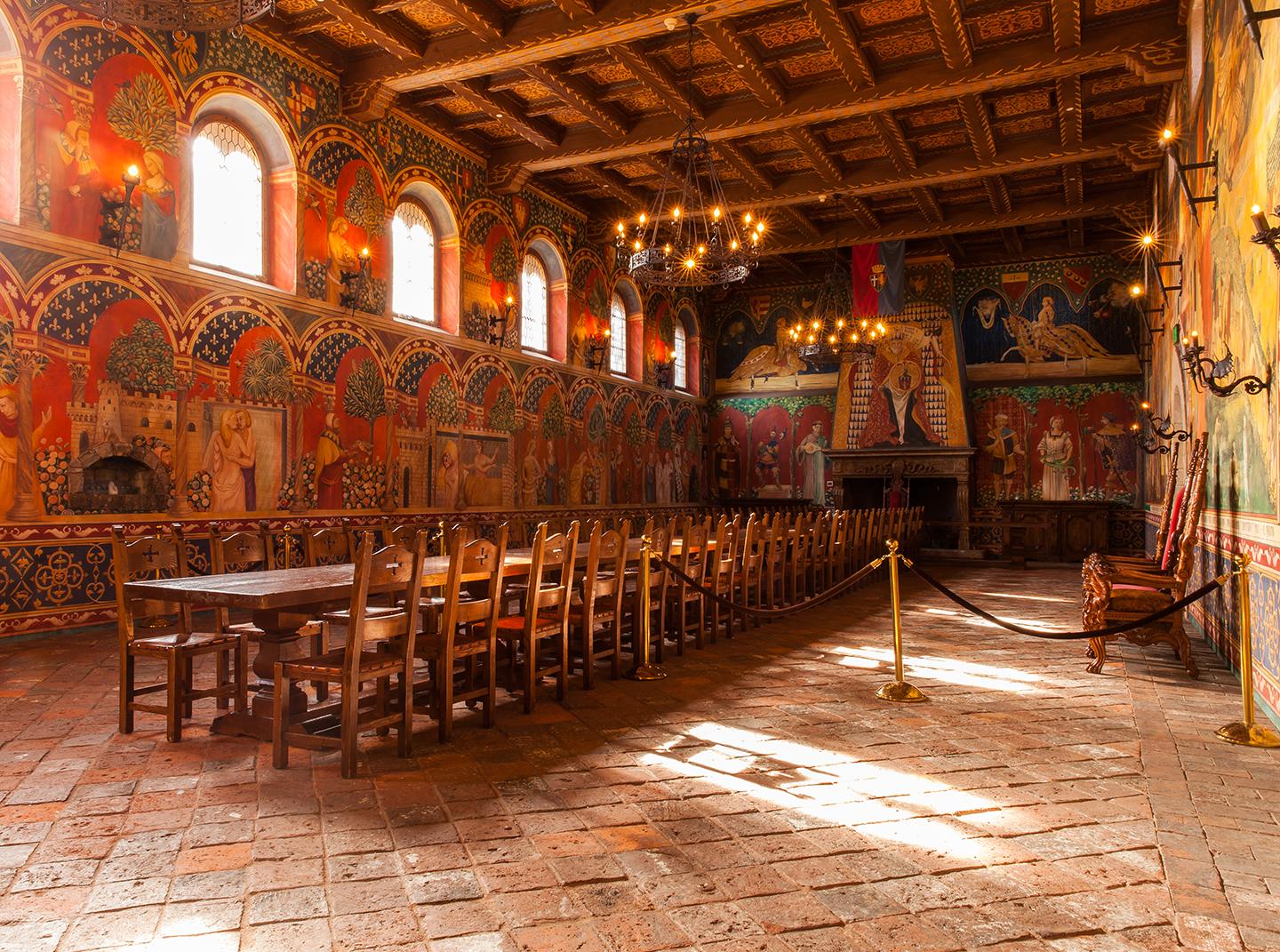
The Grand Hall is perhaps the most elaborate of all chambers—a term referring to castle rooms—at Castello di Amorosa. A 500-year-old fireplace from Umbria, Italy, was installed at one end. But most significant are the hand-painted Italian-style frescoes adorning the walls. The cross-beamed ceiling is stenciled. Besides all the sumptuous color in this arresting Grand Hall are the massive hand-forged iron candelabras suspended on iron rods. (Castello di Amorosa)
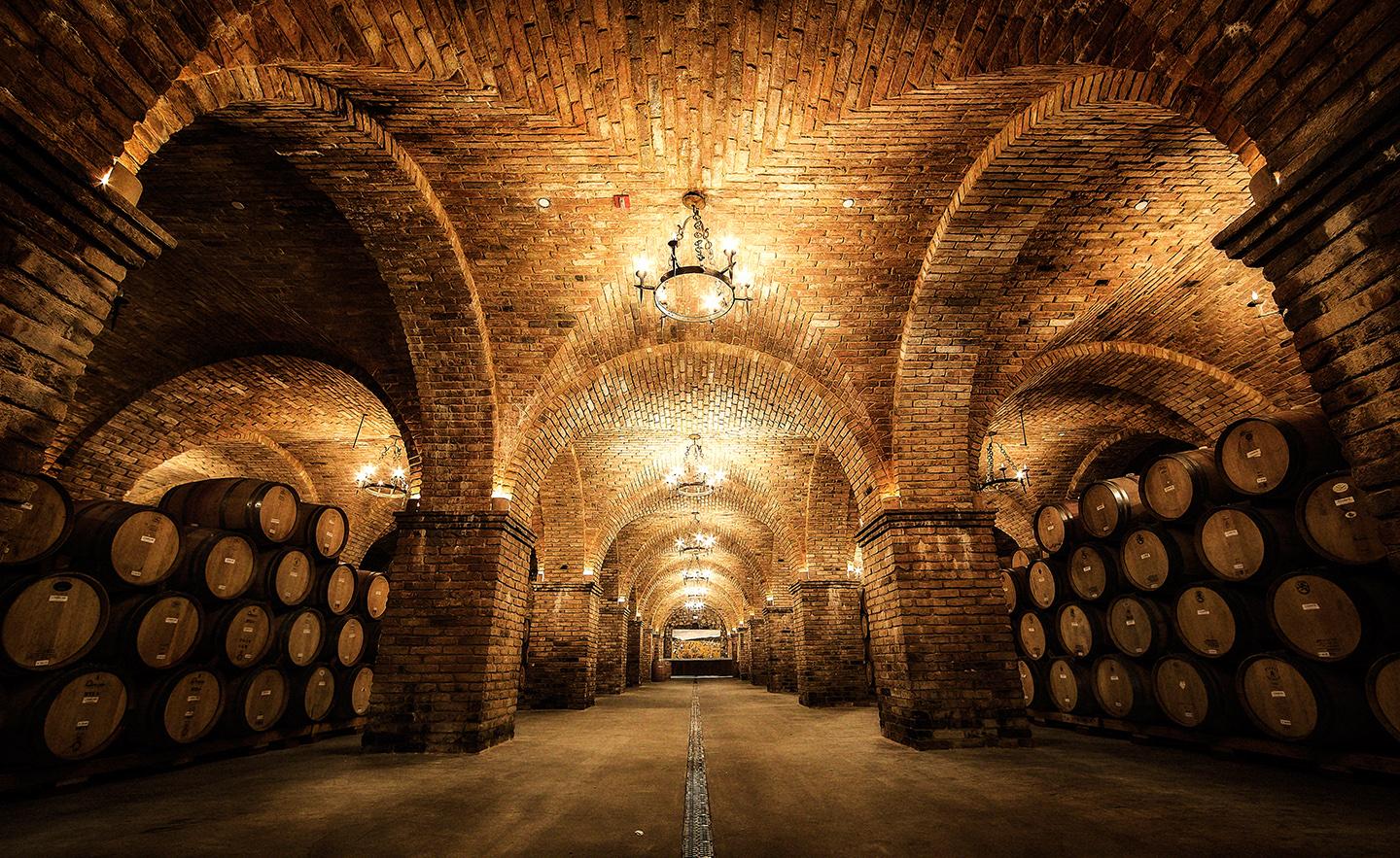
While the 12,000-square-foot barrel room is a functioning space to store wine barrels, it also showcases a ceiling of multiple cross (also referred to as groin) vaults made with distinct sandstone bricks. To achieve the elaborate ceiling display of 40 ribbed vaults, two barrel vaults, essentially extended arches, must intersect at right angles. The wide arches are perched on sandstone brick columns. (Castello di Amorosa)

Covered walkways at monasteries, cathedrals, and some colleges are called cloisters, which sport a medieval loggia design. The covered walkway has at least one side that's typically open to a garden and the other side is the wall of a main structure. Castello di Amorosa’s brick and stone cloisters embrace the Gothic-style pointed arch design in the loggias’ ceilings, while the arches facing outward are more classically Roman in design and appear to sit above square brick columns. (Kit Leong/Shutterstock)
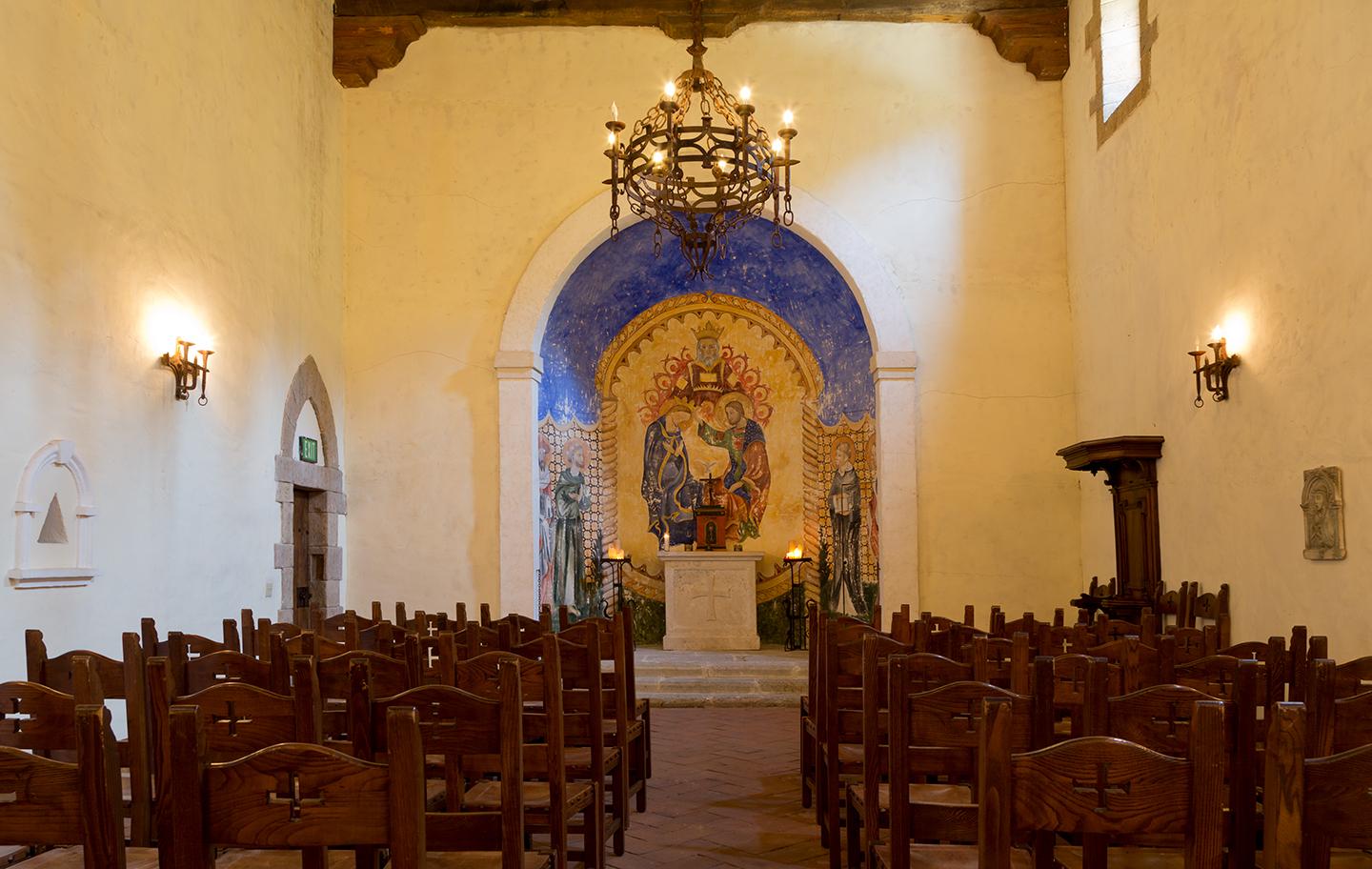
A staple aspect of European castles was a chapel. Castello di Amorosa is no exception. The chapel’s most ornate element is the chancel, or space behind the altar, where a multi-hued fresco depicts the birth of Jesus. A pointed Gothic-style arch made of stone surrounds the doorway, while a hand-forged iron lighting fixture hangs from a massive beam secured between stucco walls. Library of Congress. (Public Domain)

The functioning drawbridge that leads to the castle’s south tower is made of iron, wood, and heavy metals. The stone surrounding the drawbridge was individually chiseled and secured in place to form the walls, railings, and columns. Over the doorway are polished stone blocks that form a segmental or squarish arch, as well as a pointed Gothic arch. A portcullis, or heavy, pointed, metal gate, descends in front of main wooden and iron double doors. (Kit Leong/Shutterstock)
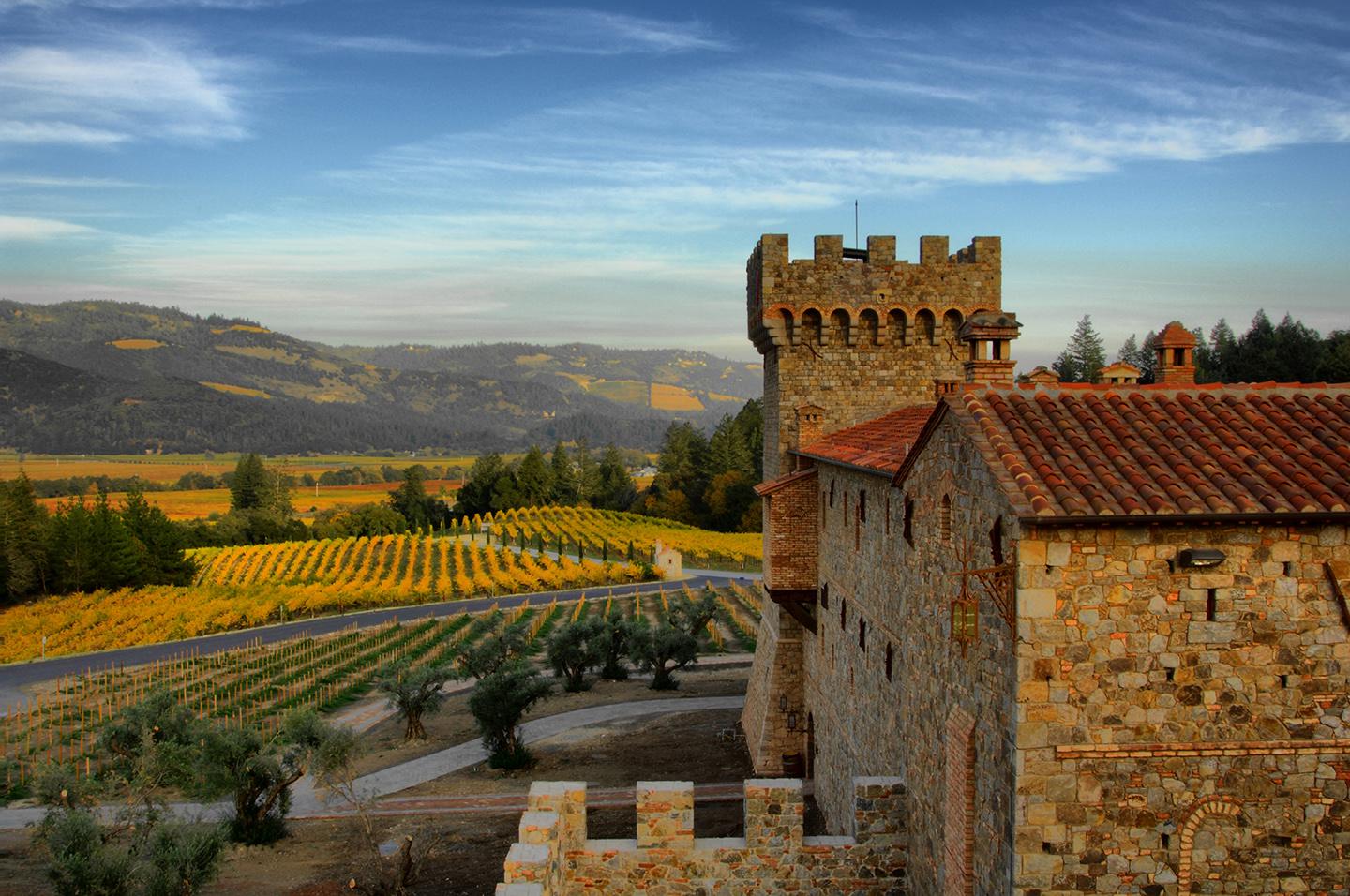
Terracotta tiles top the roof of Castello di Amorosa and coordinate with the structure’s earthen-colored stones. The view is of acres and acres of vineyards. (Castello di Amorosa)
“You simply can’t build an ‘old structure’ using modern techniques and tools,” Sattui said. “It would look fake, and everyone would realize it’s an imitation. Rather, we were going to build the structure ... using the same techniques medieval builders had relied on 800 years ago.”
What arts and culture topics would you like us to cover? Please email ideas or feedback to features@epochtimes.nyc
